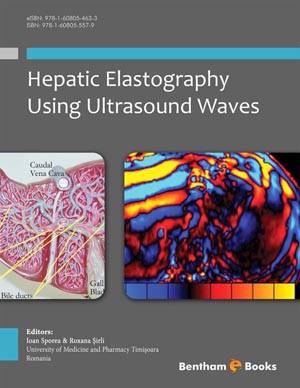Abstract
Real-Time Elastography, developed by Hitachi, similar to acoustic radiation force impulse (ARFI) technology, is an add-on module that can be incorporated in standard ultrasound devices, that uses conventional ultrasound transducers for the examination, allowing the direct visualization of liver parenchyma while performing liver stiffness (LS) evaluation. The method is reliable and reproducible also in patients with ascites and was performed for the first time with Hitachi systems (EUB-8500 and EUB-900). The Hitachi SonoElastography (HI-RTE) module uses an extended combined autocorrelation method to produce a real-time elasticity image, by using a freehand approach to compress the tissues with the ultrasound transducer. The relative tissue elasticity is calculated and displayed as a color overlay on the conventional B-mode image.
The technique was further developed on the new HI VISION Preirus (Hitachi Medical Systems Europe Holding AG) system with embedded elastography module. In this system the device automatically captures the internal compression transmitted to the liver parenchyma by the heartbeat. A ROI can be placed approximately 1 cm below the liver capsule and on each image the histogram and the parameter values are displayed.
Until now several elasticity scores were evaluated and even if there still are limitations of this method, the last results obtained with the new RT-E system seem to open new perspectives for this type of hepatic elastography, over passing the subjective analysis of color mode elastography.
Keywords: Real time elastography, liver stiffness, elasticity index.






















